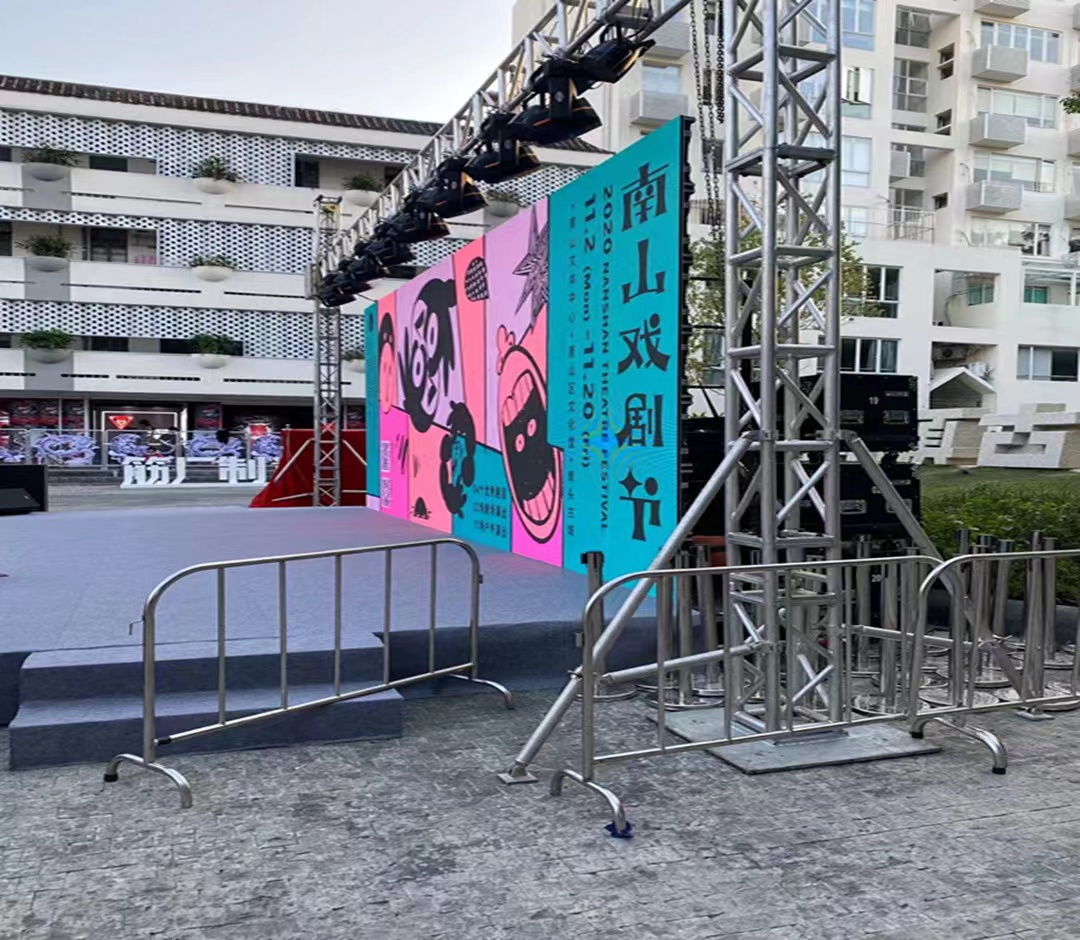Environmentally friendly and energy-saving LED display is a system engineering application that integrates international cutting-edge engineering technologies such as electronic technology, computer technology, electrical technology, optical technology, green environmental protection, light pollution reduction and low power consumption. For a long time, low power consumption has become a key indicator that users pay attention to. Reducing energy consumption and green environmental protection is an important development direction of LED display industry technology. Outdoor environmental protection and energy saving LED display adopts international cutting-edge design concepts, taking into account various cost factors, and finally carries out low-power innovation and innovation from three aspects. design:
1. Energy-saving design of wireless module
The energy design technology is mainly based on the design of the latest LED wireless modules and constant current driver chips to drive high-efficiency LED lamps.
(1) The latest LED wireless module screen design and low-energy LED tube selection: The pixel screen of the environmentally friendly and energy-saving LED wireless module is generally composed of a single pixel, and the maximum power consumption of the pixel is: 300w/㎡. The physical density is as high as 40,000 points/㎡. There is a linear and proportional relationship between the current and the brightness of the light spot. Using high-density and low-energy-consuming device groups, the point power consumption of LED lamps is 50% lower than that of ordinary LEDs, and the power consumption of display pixels is relatively small. Under the condition that the pixel brightness of the display screen is uniform and constant, the power consumption of the wireless module of the LED energy-saving display screen will be reduced to more than 20%. Therefore, the use of environmentally friendly LED display device groups with high light spot efficiency and high intensity brightness value can achieve effective energy saving.
(2) High-efficiency constant-current drive circuit design: The traditional LED display components use a 5V power supply to drive the dot matrix module to supply power, divide the voltage to the constant-current drive circuit IC, and eliminate the need for the constant-current circuit chip to achieve linear conduction. In addition to the positive voltage power, other remaining voltages are converted into heat energy and cause unnecessary consumption. The LED energy-saving and environmental-friendly display component pixel constant current drive circuit is designed to adopt the decentralized power supply mode of unitary LED devices: the unitary device also adopts the latest technology energy-saving low-voltage energy-saving driver IC. After many tests, it has been proved that the energy-saving wireless module can save more than 20% energy compared with the traditional module when the same type of energy-saving constant current driver chip LED components are used and the same display effect is required.
2. Energy-saving design of LED environmental protection and energy-saving display control system
The LED environmental protection and energy-saving display screen includes computer hardware and system software, and the media editing platform of the LED energy-saving and environmental protection display system provides video signal sources for the LED energy-saving and environmental protection display screen; it is also the monitoring platform of the LED energy-saving system. From the perspective of environmental protection and energy saving, various software and hardware of the system are properly controlled to achieve system energy saving:
(1) According to the current power consumption requirements fed back by the actual operation, the three-way cross power supply components of the paired hardware are balanced and controlled;
(2) To achieve time efficient management of LED display pixels;
(3) Realize the rationalized control of the display brightness in the environmental program.
3. Energy-saving design of module power supply
The outdoor LED energy-saving and environmental protection display adopts high efficiency, with PFC synchronous circuit design power supply, which greatly improves the pixel power, reduces thermal energy consumption, and enables the energy of the switching power supply to be effectively converted. It is a bus power supply mode in which the outputs of the low-voltage and high-current switching power supply modules are connected in parallel. Due to the low power factor, the copper loss of the transformer is large, and the entire power conversion efficiency is low (only within 75% of the full load). The energy conversion efficiency of the modular switching power supply is as high as 86% or more, and the efficiency is at least 20% or more than the energy saving of the conventional power supply conversion rate. Taking the above measures, the advantages of low power consumption of outdoor LED energy-saving and environmental protection display screens have 4 aspects:
(1) Saving of electricity cost; reduction of operating cost.
(2) Reduce the temperature of the display module; reduce the investment in cooling equipment;
(3) Reduce the power consumption of the display screen and reduce the investment in cable and power capacity expansion
(4) Delay the decay speed of the LED, reduce the temperature drift of the optoelectronic parameters of the display, stabilize the image effect, improve the reliability of the system, and prolong the life of the display. Compared with the conventional LED display, the outdoor LED energy-saving and environmental protection display not only reduces the investment of heat dissipation equipment, delays the LED decay rate, but also saves energy by 25%-50%. The outdoor P10 surface of 1000 square meters is calculated by sticking a full-color display screen. The traditional LED display 100 square meters consumes 1000W of power, and the power consumption per hour is 100KW. According to the calculation of 1 yuan per kilowatt-hour of electricity, the cost of electricity per hour is 100 yuan. According to the average lighting of 10 hours per day, the electricity cost is 1,000 yuan per day. The same 100m2 P10 surface is attached with an energy-saving display screen, and the average energy saving is 40%. The power consumption per 100m2 is 545W, and the screen power consumption per hour is 54.5KW.
All in all, the energy-saving LED display are better than the traditional LED displays.For more information about Flinky LED display, please follow us on Twitter,Linkedin,Facebook,Instagram,Pinterest,Tumblr and so on!



评论